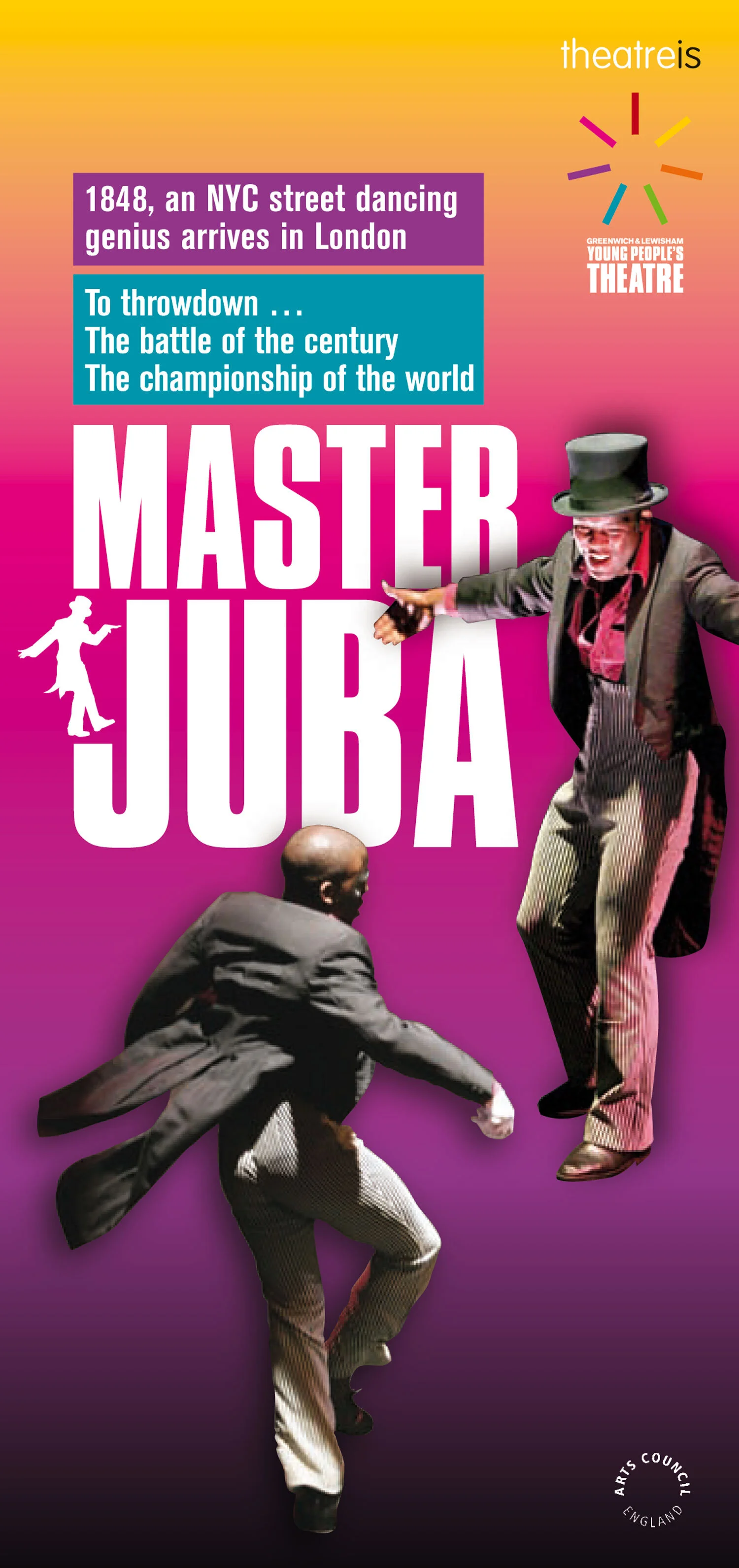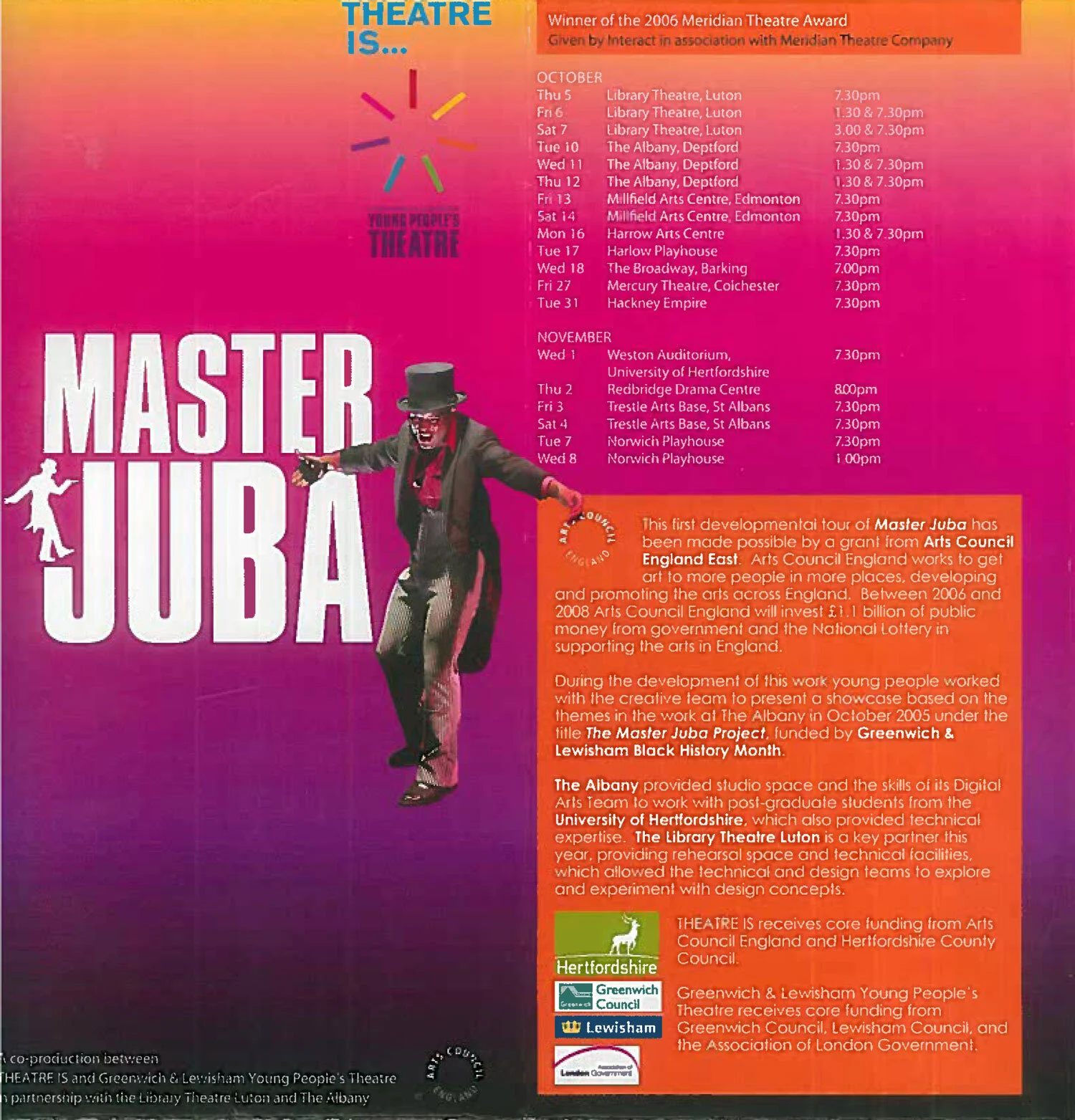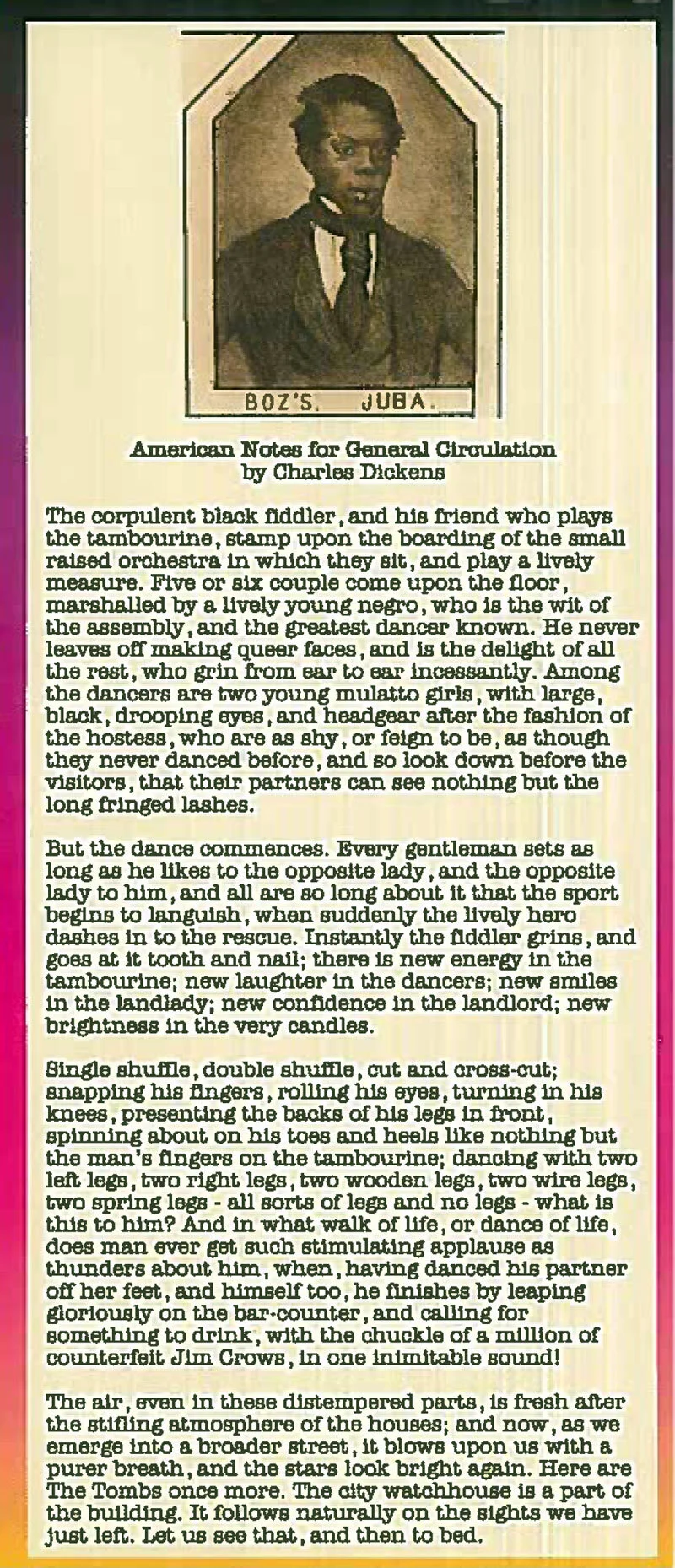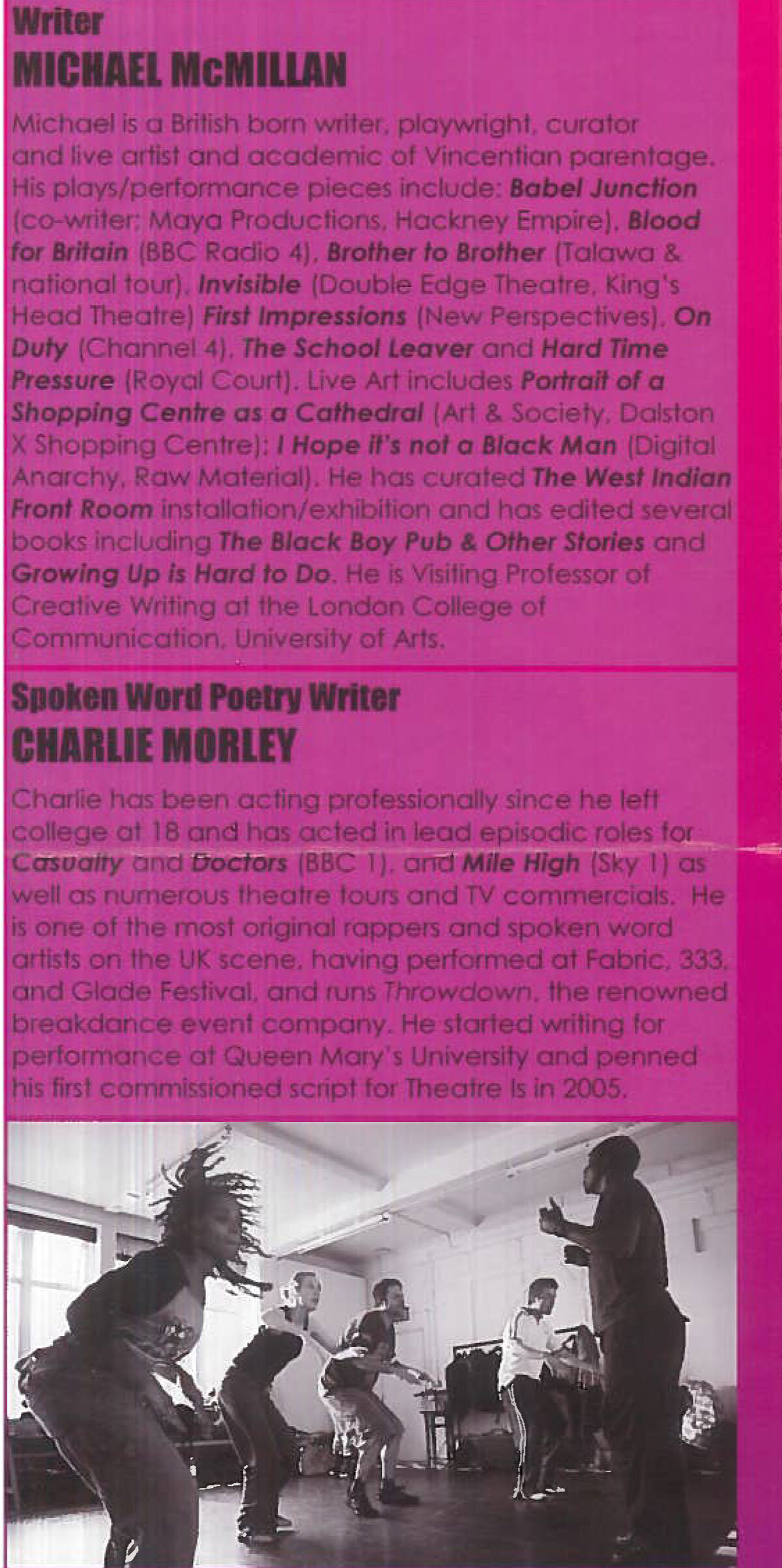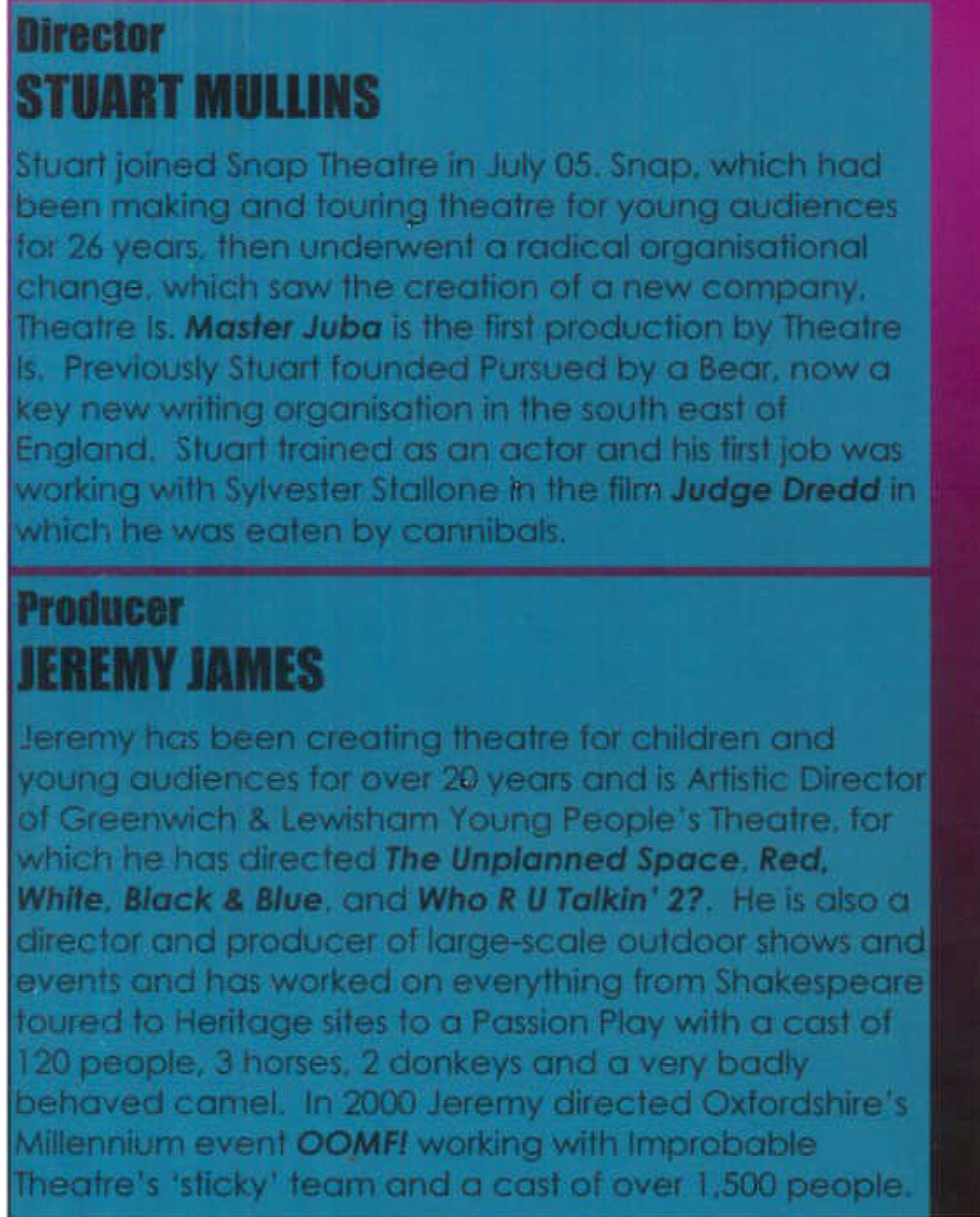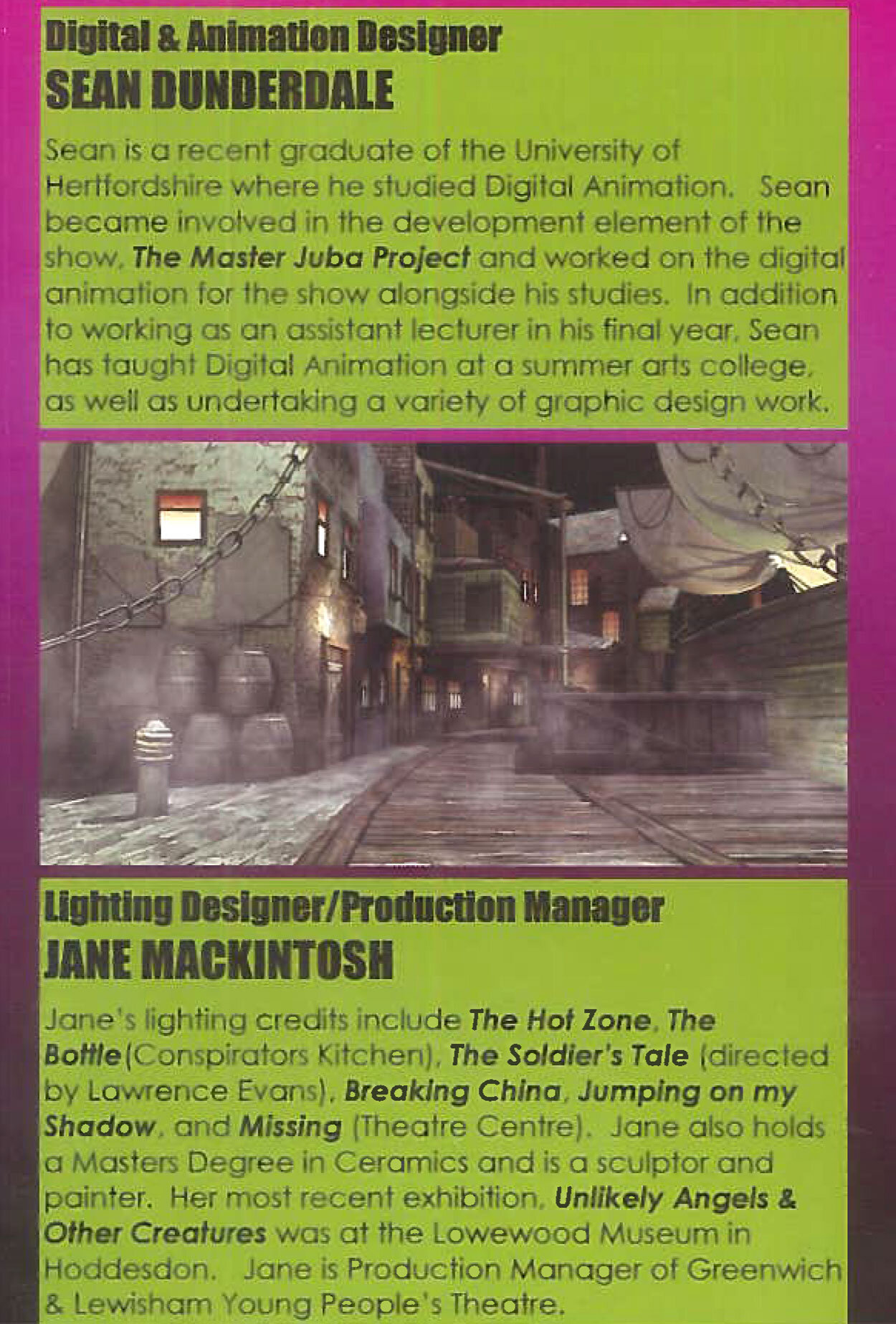Master Juba
This play by McMillan explores the life of William Henry Lane aka Master Juba, a mid-19th century young Black male dancer, who came from New York, USA. He was a gifted innovator of dance styles, such as fusing the African Juba with the Irish Jig and Soft Shoe, and even winning Irish Jig dance competitions. Taking the stage name Master Juba, he was promoted by the American showman, P.T. Barnum, and written about by Charles Dickens on a visit to New York. Master Juba is widely credited as the creator of tap dance because of his eclectic dance style.
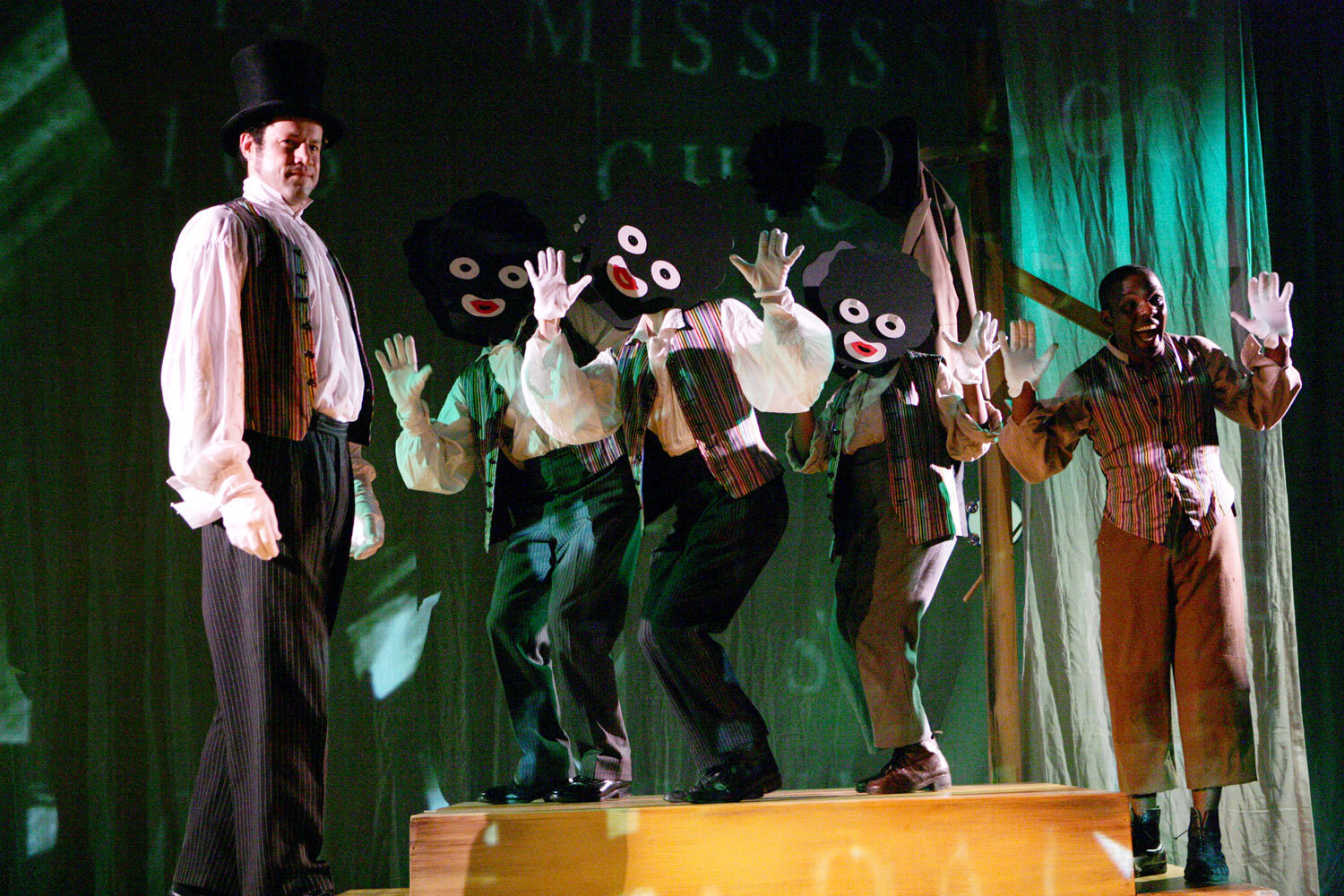
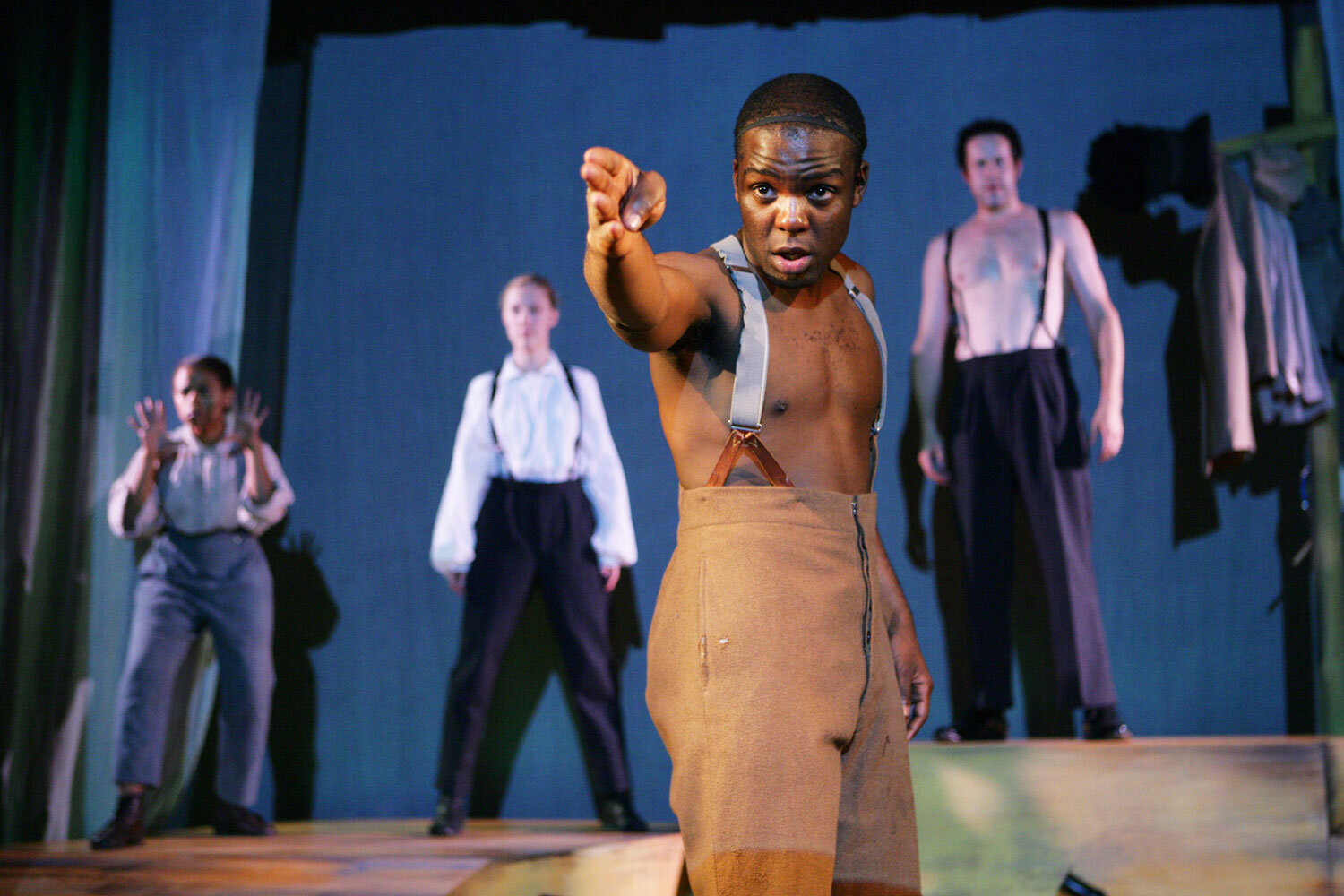
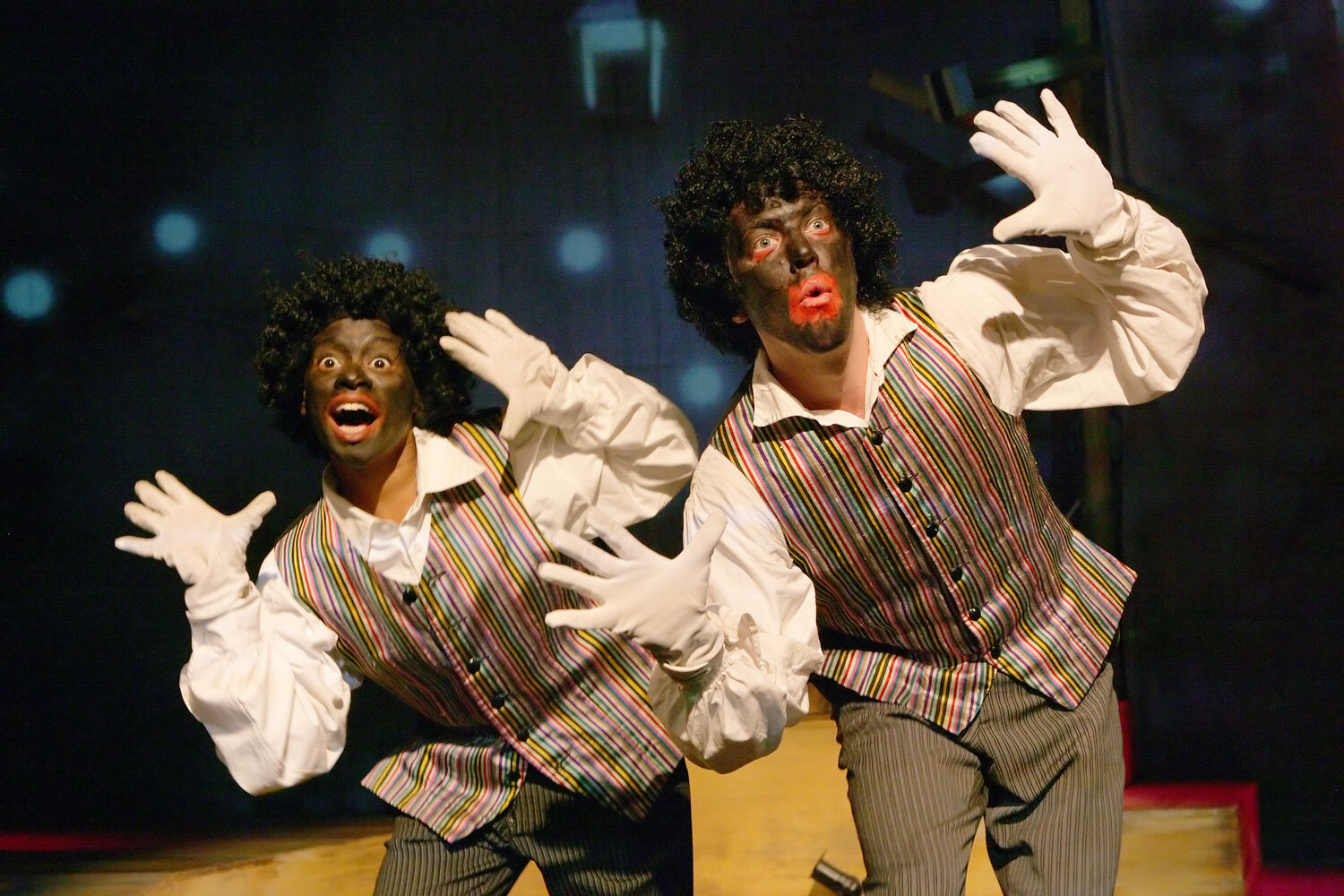
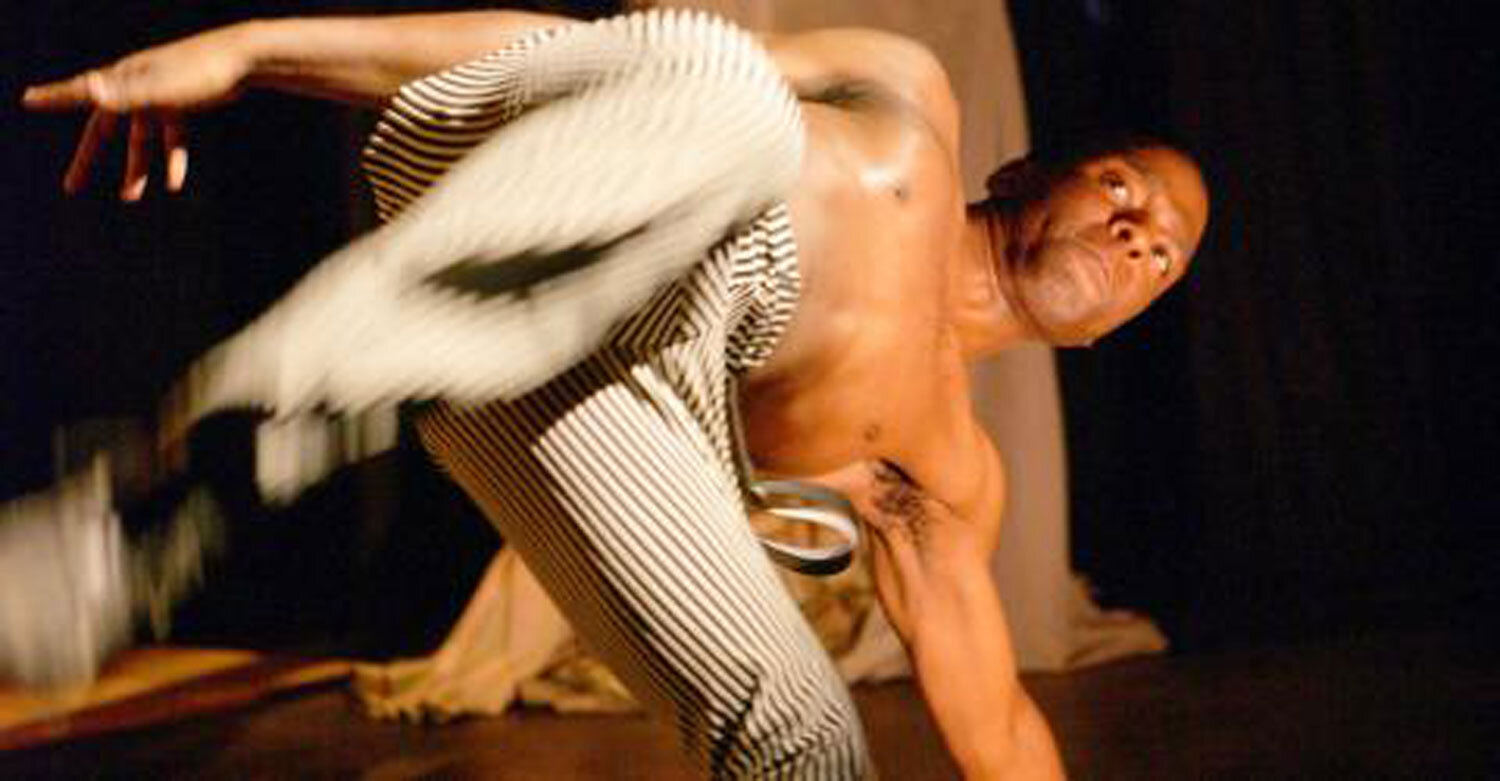
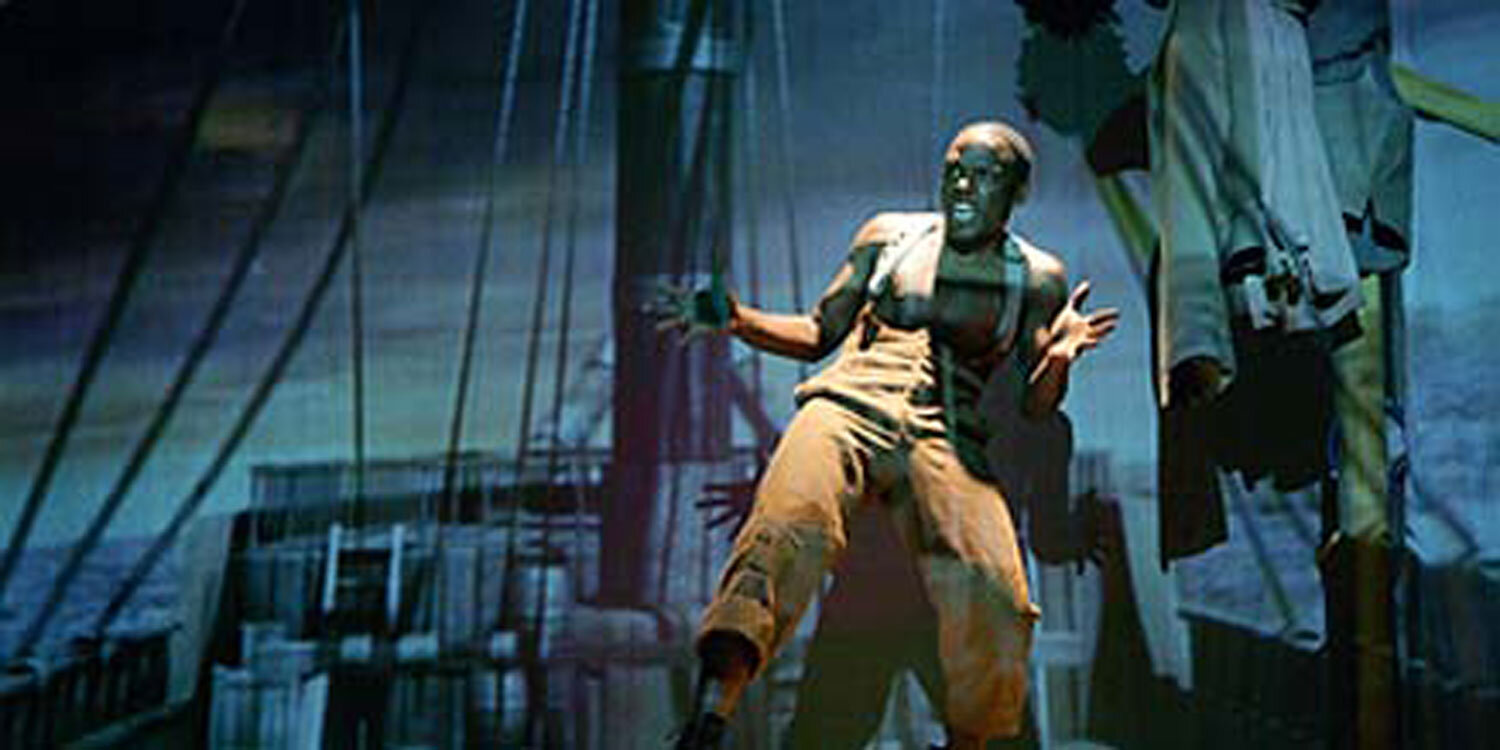
This was also the era of Blackface minstrelsy with white actors blacking up to grotesquely caricature Black culture, which would become the most popular form of entertainment on both sides of the Atlantic. After leaving Barnum, Master Juba, like many Black performers, such as Bert Williams in the early 20th century, also blacked up: a Black man imitating a White man imitating a Black man, on stage. Master Juba toured Britain, performing at London’s Vauxhall Gardens and for Queen Victoria. He eventually settled in Britain, opened a dance school, and started a family. But at 27, he died on a tour in Dublin, with his body put on public display in Sheffield.
Master Juba was directed by Stuart Mullins, with Junior Laniyan in the title role, and produced by TheatreIs in collaboration Greenwich and Lewisham Young People’s Theatre (GLYPT) with a southeast tour in 2006.
